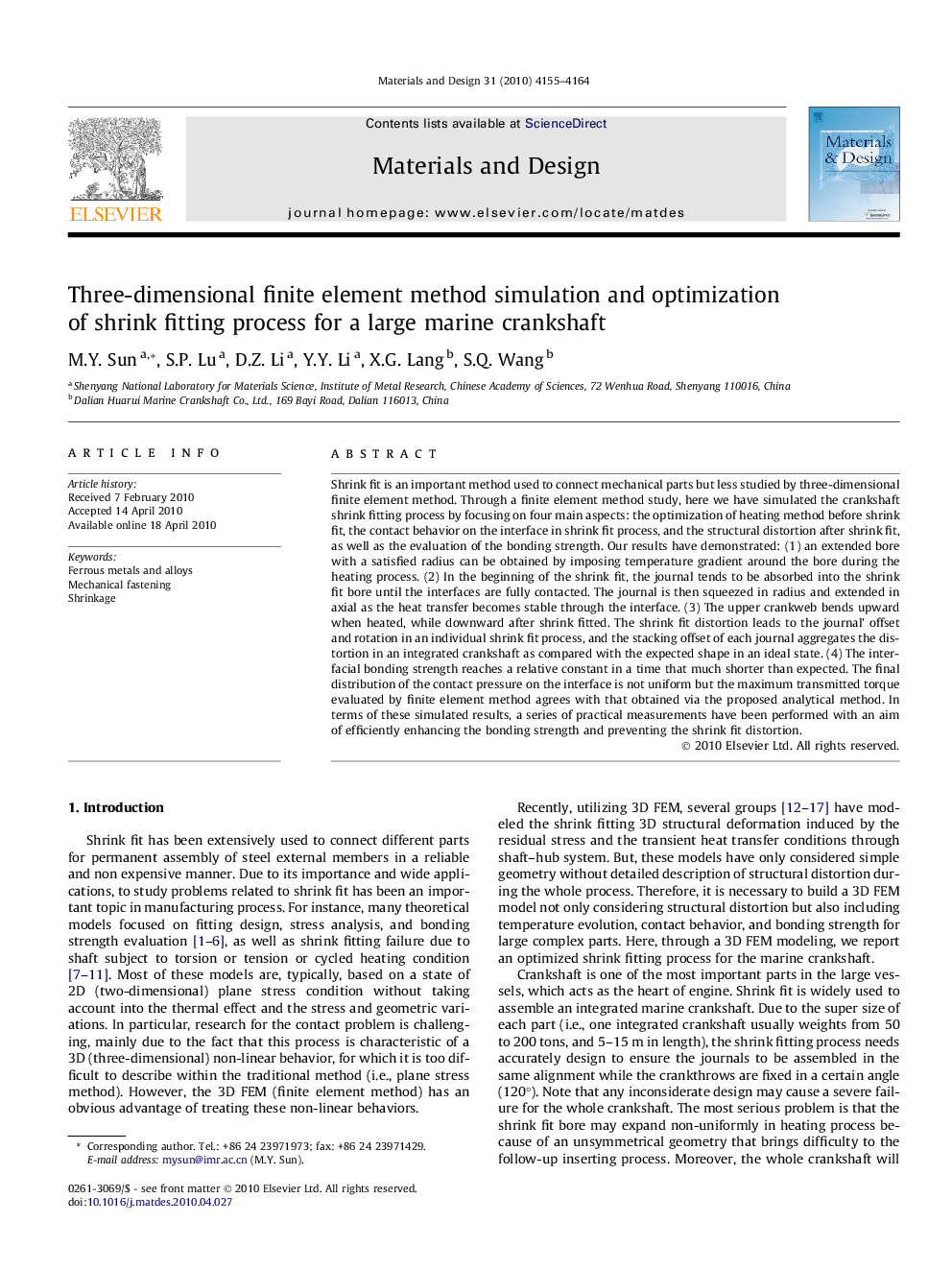| Article ID | Journal | Published Year | Pages | File Type |
|---|---|---|---|---|
| 831812 | Materials & Design (1980-2015) | 2010 | 10 Pages |
Shrink fit is an important method used to connect mechanical parts but less studied by three-dimensional finite element method. Through a finite element method study, here we have simulated the crankshaft shrink fitting process by focusing on four main aspects: the optimization of heating method before shrink fit, the contact behavior on the interface in shrink fit process, and the structural distortion after shrink fit, as well as the evaluation of the bonding strength. Our results have demonstrated: (1) an extended bore with a satisfied radius can be obtained by imposing temperature gradient around the bore during the heating process. (2) In the beginning of the shrink fit, the journal tends to be absorbed into the shrink fit bore until the interfaces are fully contacted. The journal is then squeezed in radius and extended in axial as the heat transfer becomes stable through the interface. (3) The upper crankweb bends upward when heated, while downward after shrink fitted. The shrink fit distortion leads to the journal’ offset and rotation in an individual shrink fit process, and the stacking offset of each journal aggregates the distortion in an integrated crankshaft as compared with the expected shape in an ideal state. (4) The interfacial bonding strength reaches a relative constant in a time that much shorter than expected. The final distribution of the contact pressure on the interface is not uniform but the maximum transmitted torque evaluated by finite element method agrees with that obtained via the proposed analytical method. In terms of these simulated results, a series of practical measurements have been performed with an aim of efficiently enhancing the bonding strength and preventing the shrink fit distortion.
